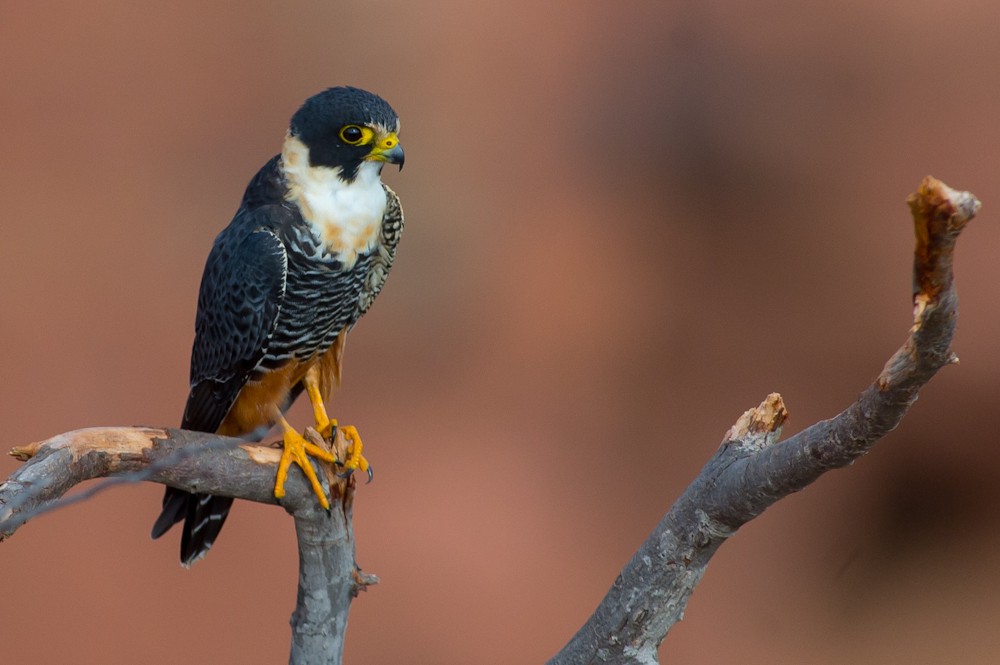Bat Falcon
A species of True Falcons Scientific name : Falco rufigularis Genus : True Falcons
Bat Falcon, A species of True Falcons
Botanical name: Falco rufigularis
Genus: True Falcons
Content
Description General Info
Description
The bat falcon (Falco rufigularis) is a falcon that is a resident breeder in tropical Mexico, Central and South America, and Trinidad. It was long known as Falco albigularis; the names Falco fusco-coerulescens or Falco fuscocaerulescens, long used for the aplomado falcon, are now believed to refer to the present species. The female bat falcon, at 30.5 cm length, is much larger than the 23-cm-long male. Adults have a black back, head, and tail. The throat, upper breast, and neck sides are creamy white, the lower breast and belly are black, finely barred white, and the thighs and lower belly are orange. Young birds are similar, but with a buffy throat. The call of this species is a high pitched ke-ke-ke like the American kestrel. It is probably closely related to and looks like a small version of the orange-breasted falcon. These two, in turn, are probably closest to the aplomado falcon and constitute a rather old American lineage of Falco species. This small dark bird of prey inhabits open woodlands and forest clearings. Bat falcons perch conspicuously on high, open snags, from which they launch aerial attacks on their prey. They hunt bats, birds, small rodents and large insects such as dragonflies. The smaller male takes more insects, and the female more birds and bats. The flight is direct and powerful. This falcon is partly crepuscular, as the bats in its diet suggest. It lays two or three brown eggs in an unlined treehole nest. 
Size
30 cm
Colors
Brown
Black
Yellow
Gray
White
Orange
Life Expectancy
12-18 years
Nest Placement
Cavity
Feeding Habits
Bat Falcon's diet consists mainly of bats, birds, small rodents, and insects like dragonflies. Males primarily hunt insects, while females prey more on birds and bats, showcasing a sexual dimorphism in feeding behavior.
Habitat
The bat Falcon primarily resides in tropical forests, from the lowlands to montane regions up to 1700 meters elevation, showing adaptability in a range of habitats, including dense and secondary forests, forest edges, and even urban landscapes. Its preference for intact forest habitats provides sufficient nesting and perching opportunities within these biodiverse environments.
Dite type
Carnivorous
General Info
Feeding Habits
Bird food type
Species Status
Not globally threatened.
Scientific Classification
Phylum
Chordates Class
Birds Order
Diurnal Birds of Prey Family
Falcons and caracaras Genus
True Falcons Species
Bat Falcon 